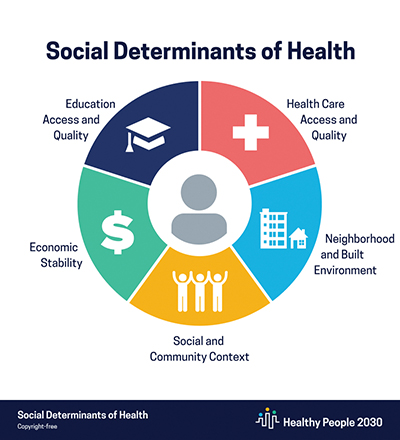
As system vice president of community health for CommonSpirit Health, Pablo Bravo oversees the system's rollout of Connected Community Networks. The networks rely on a "trusted community convener" and a shared technology platform to link a range of community partners who help individuals with affordable housing, nutrition assistance, mental health counseling and other needs that factor into the social and economic determinants of health and health care outcomes.
Bravo talked with Catholic Health World about how and why CommonSpirit is working to establish and expand the networks in select markets. The system launched the first network in Las Vegas in 2016. It has since shepherded 13 Connected Community Networks in five states. The interview has been edited for length.
What prompted CommonSpirit to come up with the Connected Community Networks' framework?
We needed to find ways to address social determinants of health. One thought was to connect patients to community-based resources that help them stay healthy or manage an illness. My thought was, wouldn't it be great to create a network of community organizations that can work together, that can refer to one another?
Think of an individual going to a food bank and saying "Look, I need soft food because of a toothache." What if the food bank worker could say, "I can connect you to a dentist"?

I hired Ji Im, system director community health, to look at this potential for connectivity. And, it spun from there.
I also thought that if social services and health organizations built and participated in a community network, they might stop challenging each other for grants. The competition is so great for the grants.
Is this a network of equals or have CommonSpirit hospitals taken the lead?
This is a network of equals. We are a provider just like everybody else. I think the only difference has been that we have initiated the conversation. It is a partnership, it's a network and we're all equal.
Do the networks all use the same technology platform?
We started (in Las Vegas) using a one-way technology. It generated a referral from the hospital to local resources. Our goal was always to have a technology that made it possible for every participating organization in the network to refer to one another. Three years later on, Aunt Bertha and Unite Us and all these other technologies popped up, so it was meant to be. Right now, communities are choosing the technologies that are the best fit. We're mixing and matching. Unite Us is definitely one of our primary vendors, but we are also looking at Aunt Bertha, Charity Tracker, etc.
Were the first networks pilots for the others?
They're all still pilots. They're showing major benefits across the board. There is a lot more work to be done, but the pilots are connecting patients to resources, helping us reduce hospital utilization. We're definitely seeing a benefit to having a network of partners working with us to address access to resources, services and care.
I know that our partners are also seeing that these pilots are demonstrating significant impact. The new IT solutions that we have in place make it possible for everybody to refer to one another and for us to record the referrals and some of the outcomes. The networks continue to grow and mature. In another year we can really take a look and see what the data is showing.
How much organizational cooperation was there to begin with among the participants and how has that evolved?
As anchor organizations in the community, hospitals have long-standing relationships with our community-based organizations. We didn't come to the table and say: This is going to be our platform; this is going to be our network. We said: It is going to be all of us together; no one is the owner. I think everyone at the table was really excited to see something develop and see that it was going to be owned by everybody. Later on, the networks brought in a neutral convener. United Way fills this role in several Connected Community Networks.
Are all the service providers in the network nonprofits? Will for-profits have a role in providing services that address social needs?
The network is open to anyone. If you have a service that you can provide to the community that is going to address specific issues, come on in. We're not the decider. The network is the decider. We hope that the networks will evolve even to a greater scale. It'd be great to have employers and I know in some places schools have stepped up to the plate to be part of the network. We would love the network to grow. For right now, the members are all community-based organizations.
Is this essentially a referral network resource, or will the network be instrumental in scaling community services to meet unmet needs?
At this point, it could all go so many different directions. The idea is the network will bring us all together, so services become orderly. Also, it would allow community-based organizations to specialize in certain areas, so they could potentially be getting paid for those services. For example, community-based organizations providing services for seniors could develop a small network of their own within the network, so if you have a payer or an organization that is looking for senior services, well, the specialty network's right there. You could develop specialty networks that ultimately could provide funding for a lot of these services.
What investment was required by CommonSpirit to initiate the networks?
Our investment in each of our communities around the Connected Community Network is significant, but we haven't done this alone. There's been other systems that we have partnered with, Kaiser Permanente and others. We have invested in this in the sense that we have provided technical assistance. We have funded the technology licenses for the community-based organizations and then we provided funding for some of the neutral conveners to get set up. We have put some money into development of the Connected Community Networks and also staff to technically assist their capability.
How central is the Connected Community Network to CommonSpirit's efforts to invest in initiatives that improve social determinants of health in order to get upstream of disease?
The network is only one initiative within community health at the system level. There's a lot of great work being done at each individual facility too, whether it's programs around diabetes prevention, chronic disease management or response to cultural trauma. The list goes on and on.
The days of providing an individual with a piece of paper saying, "After you leave us, call this number" (are waning); the follow-through is not necessarily there. With the networks, patients' follow-through is not going to be 100%, but I believe that if the referral process is easy and folks don't have to worry about having to make the appointments themselves, the compliance will be higher.
